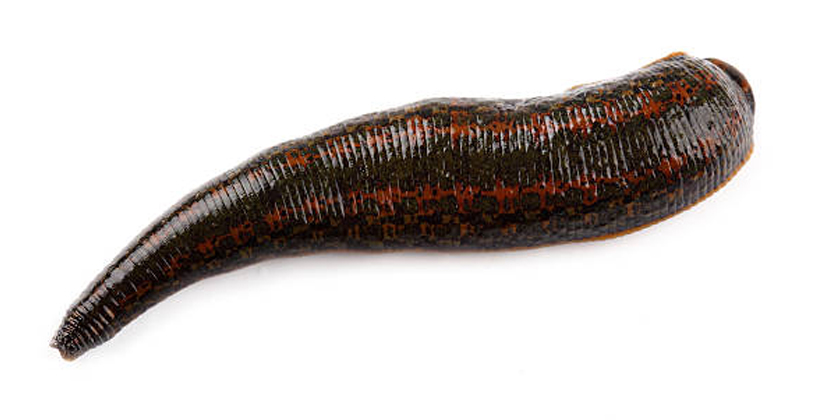Leech Therapy for Neurological Conditions: What You Need to Know
What Is Leech Therapy for Neurological Conditions?
Leech therapy for neurological conditions involves using medicinal leeches (Hirudo medicinalis) with the potential to aid nerve repair by improving blood flow and reducing inflammation. While extensive research has been conducted on the regenerative capabilities of the leech nervous system, its direct application for nerve regeneration in humans, particularly for conditions like neuropathy or post-surgical complications, remains largely experimental.
Why Leech Therapy Matters for Neurological Health
Leech therapy for neurological conditions is gaining interest due to the remarkable regenerative abilities observed in the medicinal leech’s nervous system. A 2011 PLOS One study demonstrated that axons in the leech central nervous system (CNS) can regenerate precise synaptic connections within weeks after injury. While direct human evidence is limited, the understanding of how medicinal leeches achieve such neural recovery may offer insights for future human neural regeneration strategies. The potential of this therapy lies in its ability to enhance circulation and reduce inflammation, which could indirectly support overall brain and nerve health.
How Leech Therapy May Support Neurological Conditions
Mechanisms in Leech Nerve Regeneration
Studies on leeches provide valuable insights into nerve repair processes:
- Axon Regeneration: Severed axons in the leech CNS are capable of accurately reconnecting with their target neurons, leading to the restoration of function (Nature, 1971).
- Microglial Activity: Microglia, which are macrophage-like cells, play a crucial role in guiding axon repair and clearing cellular debris following an injury (ScienceDirect, 1983).
- Molecular Signals: Nitric oxide synthase (NOS) activates rapidly within minutes of injury, potentially serving as a key signal in initiating nerve regeneration (Purdue University).
- Cannabinoids: Studies on the leech CNS suggest that endocannabinoids enhance neurite outgrowth through the activation of TRPV receptors (PLOS One).
Potential Human Applications
While leech therapy is FDA-approved for improving blood flow in reconstructive surgery (Healthline, 2024), its specific role in human nerve repair within neurological conditions is largely experimental and indirect:
- Improved Circulation: Hirudin, a potent anticoagulant found in leech saliva, prevents blood clots. This improved blood flow could potentially enhance oxygenation to nerve tissue, which is vital for nerve health (University Hospitals).
- Inflammation Reduction: The anti-inflammatory agents present in leech saliva may help reduce swelling and inflammation, thereby potentially protecting nerves from further damage and supporting neural recovery.
- Pain Relief: Analgesic compounds in leech saliva may help alleviate neuropathic pain, as has been anecdotally noted in some shingles cases (The Leech Clinic).
- Hematoma Management: Leeches are effective in reducing blood pooling after surgery, which could prevent compression of nerves and surrounding tissues (Cureus).
A 2022 case study reported improved scalp circulation in patients with folliculitis decalvans treated with leech therapy, suggesting a potential indirect benefit for nerve-related conditions affecting the scalp (Healthline).
Benefits of Leech Therapy for Neurological Conditions
Leech therapy for neurological conditions offers potential benefits, primarily inferred from the detailed studies on leech biology and limited human observations:
- Enhanced Blood Flow: Supports better oxygen and nutrient delivery to nerve tissues, which is crucial for neural recovery and overall nerve health (University Hospitals).
- Pain Management: May help ease neuropathic pain, contributing to improved patient comfort (The Leech Clinic).
- Reduced Inflammation: Could protect nerves from the damaging effects of inflammatory responses.
- Research Potential: Insights gained from leech studies continue to inform broader strategies for human neuropathy treatment and nerve regeneration research (PLOS One).
Risks and Limitations
Leech therapy for neurological conditions has significant limitations and potential risks:
- Limited Human Evidence: Most of the compelling data regarding nerve regeneration comes from studies on the leech CNS, not from robust human clinical trials directly demonstrating nerve repair in humans (Nature).
- Infection Risk: Leeches naturally carry bacteria, most notably Aeromonas. Therefore, antibiotic prophylaxis is typically required to mitigate the risk of infection (Cureus).
- Bleeding Concerns: The bite sites created by leeches can bleed for several hours, necessitating close monitoring and appropriate wound care (Healthline).
- Contraindications: Leech therapy is not suitable for individuals with certain medical conditions, including bleeding disorders, anemia, or during pregnancy (Healthline).
It is crucial to understand that human applications of leech therapy for neurological conditions are largely experimental, and claims of direct nerve repair should be approached with considerable caution and skepticism without further robust clinical evidence.
FAQs About Leech Therapy for Neurological Conditions
- Can leech therapy repair nerves in humans? There is no direct evidence to support leech therapy for directly repairing nerves in humans for neurological conditions. Its potential aid is indirect, primarily through improving circulation and reducing inflammation (Healthline).
- How does leech therapy help neuropathy? It improves blood flow and reduces inflammation, which may indirectly help ease neuropathic pain by creating a healthier environment for nerve tissues (The Leech Clinic).
- Is leech therapy safe for neurological patients? It can be safe under strict medical supervision but carries inherent risks, particularly for those with clotting issues or compromised immune systems. Consultation with a medical professional is essential (Cureus).
- What does research say about leeches and nerve repair? Leech CNS studies demonstrate robust and precise nerve regeneration. However, these findings pertain to the leech’s own biological mechanisms, and robust evidence for direct human application in nerve repair is currently lacking (PLOS One).
Conclusion: Exploring Leech Therapy for Neurological Conditions
Leech therapy for neurological conditions holds experimental promise, largely inspired by the remarkable regenerative abilities of the medicinal leech, as consistently shown in studies like PLOS One and Nature. While medicinal leeches can improve local circulation and reduce inflammation, potentially supporting neural recovery and brain health indirectly, direct and robust human evidence for nerve regeneration remains sparse. Based on current research into neuropathy treatment, leech therapy should be considered an adjunctive or experimental treatment, not a primary solution for direct nerve repair. It is imperative to consult a neurologist to thoroughly explore its potential role within a comprehensive nerve repair plan.



